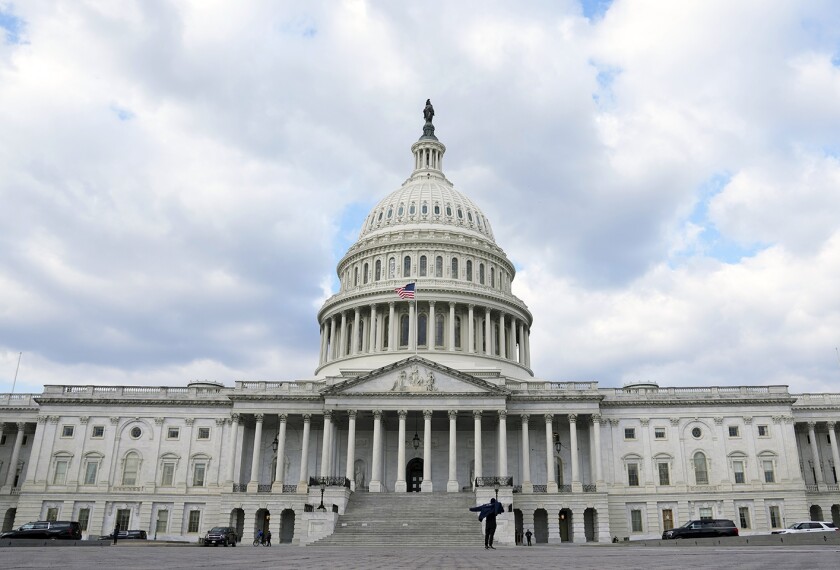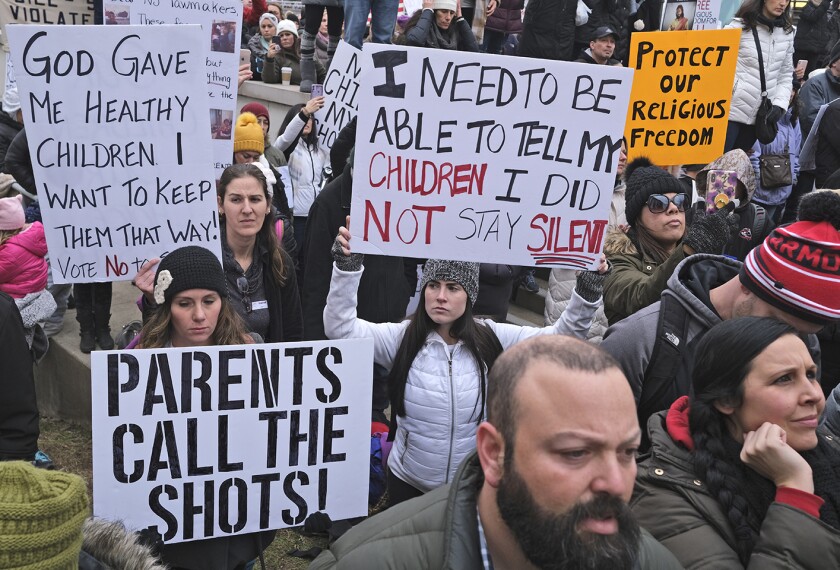When President Bush recently unveiled an accountability plan for low-performing schools that could lead to federal aid for education vouchers, he told a group of lawmakers: “If somebody has got a better idea, I hope they bring it forward.”
North Carolina’s state schools chief, Michael E. Ward, thinks he has a better idea.
At a meeting of the state board of education last week, Mr. Ward, a Democrat who was elected to a second term as superintendent in November, pitched his own extensive blueprint for turning around the state’s chronically poor-performing schools. He took a shot at Mr. Bush’s plan and said that his own proposal was “designed to be a much more complete policy solution.”
Mr. Ward’s proposal for North Carolina came as state leaders in New Hampshire and Arizona were also taking steps toward rethinking their roles in helping troubled schools help themselves. Many states have worked to devise intervention plans for low-performing schools as they put into place broader testing and accountability programs. Now that there are early indications of the effectiveness of school improvement efforts, a number of states are taking a step back and refining their intervention programs, said Michael P. Griffith, a policy analyst for the Denver-based Education Commission of the States.
“The federal proposal is going to keep their momentum going,” Mr. Griffith said. “They’re learning the system as they go.”
A Step Further
North Carolina already sends teams of educators to monitor progress and recommend changes in schools labeled low-performing as a part of an accountability program enacted four years ago. Superintendent Ward’s proposal would not alter that practice, but rather take it a step further— bringing extra support and the threat of greater state intervention to those schools labeled as low-performing for two out of three years.
Under Mr. Ward’s plan, which would cost an estimated $5 million to $7 million annually, those chronically low-performing schools would receive additional state money to reduce class sizes and extend teacher contracts to 11 months to allow for more professional development for teachers and a longer school year. The state would also create a “turnaround fund” that would pay for other state-approved programs or services, such as extended school days or “whole school” reform.
In addition, the state would offer bonuses of up to $5,000 for teachers, and $10,000 for principals, who accepted jobs in chronically low- performing schools and stayed for at least three years. Further bonuses would be offered if students demonstrated academic improvement.
If a school failed to improve for three consecutive years, the plan would authorize the state school board to restructure the school or implement certain programs, or, if necessary, to “reconstitute” the school altogether, meaning a thorough shakeup of its staff.
“For the handful of schools—and it’s really only a handful—that cannot or will not get better, this would intensify the level of intervention,” Mr. Ward said.
The North Carolina board of education is expected to vote on the proposal next month. If passed, it would be sent on to the legislature, where Democrats hold majorities in both chambers.
Lt. Gov. Beverly Eaves Perdue, who serves on the state school board, said she expected the plan to be “accepted with lots of support.” But she said she was concerned about whether the state would be able to commit resources to chronically low- performing schools on a long-term basis.
“It’s wrong for any state to fail to understand that the solution cannot be a quick fix,” said Ms. Perdue, a Democrat. “It’s a long-term commitment to an infusion of resources that are very targeted and focused on student performance.”
N.H. Watch List Proposed
Meanwhile, New Hampshire lawmakers are working to determine how and when to intervene in low-performing schools as a part of a larger effort to come up with a better, more permanent school funding system.
Last week, a bipartisan commission of 10 state legislators, known as the Adequate Education and Education Funding Commission, released the first in what is expected to be a series of reports addressing school funding issues. In it, the panel recommended that the state set up a watch list of schools that fail to meet or make progress toward state performance standards.
Under the commission’s proposal, the state would set aside a pool of approximately $3 million to provide assistance to those schools. If, after three years, the schools failed to make progress and resisted implementing state-recommended improvement strategies, the commission recommends that state education department officials intervene more directly—pending approval of their interventions by a special legislative committee.
The proposal has proved contentious, as some lawmakers disapprove of any state intervention, while others argue that state education officials should be able to intervene without first having to receive legislative approval.
But Rep. Neil M. Kurk, a Republican who chairs the funding commission, said that he considers the panel’s recommended interventions “reasonable,” even though he doubts they will be needed.
“It’s not the New Hampshire way,” Mr. Kurk said. “I think our districts will do what they can, and if they end up on the watch list, they will ask for and receive assistance.”
Mark Joyce, the executive director of the New Hampshire School Administrators Association, characterized the proposed pool of funding for state assistance to low-performing schools as “meager.”
“The schools aren’t afraid to be held accountable,” Mr. Joyce said. “But the state also has to be more responsible for helping us get better.”
Arizona Reconsiders
Arizona education officials are also hoping to refine a law authorizing state intervention in poor-performing schools.
According to the current state law, which took effect in November as a part of a voter-approved measure to increase revenue for education, the state is required to identify “underperforming” schools through test scores and dropout rates and release the list to the public in October. If, after a year, the low-performing schools fail to improve, they are to receive help from a state “solutions” team charged with recommending improvements.
But The Arizona Republic, the state’s largest newspaper, released an analysis last week indicating that under current state guidelines, roughly half the state’s 1,900 schools could be labeled low-performing.
Patricia Likens, a spokeswoman for the state education department, said that agency officials were working to craft a new set of indicators that would identify those schools that truly need help. The changes would then require legislative approval.
“We don’t want schools to be labeled as failing that shouldn’t be,” Ms. Likens said. “At the same time, we don’t want to miss schools.”




